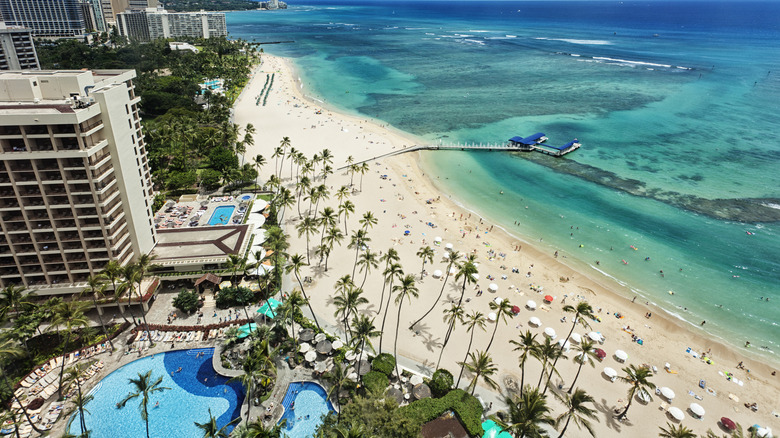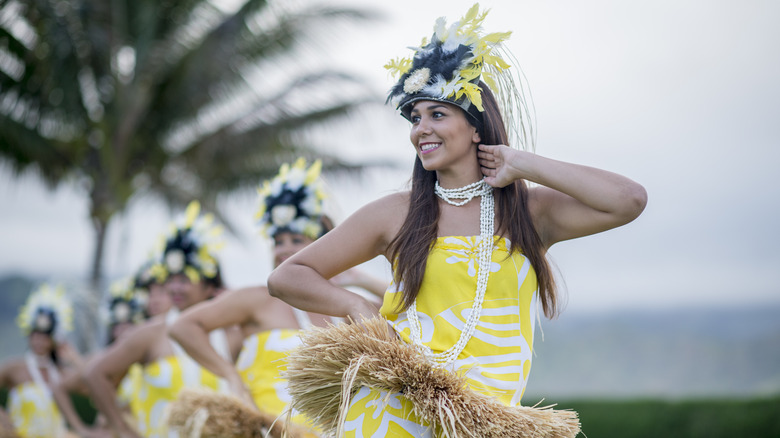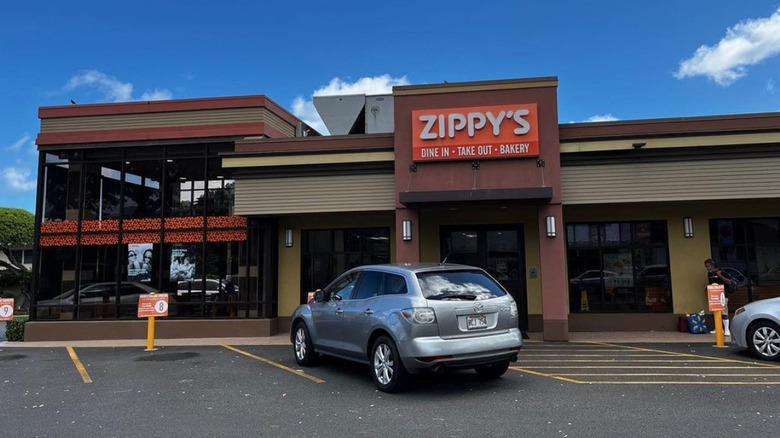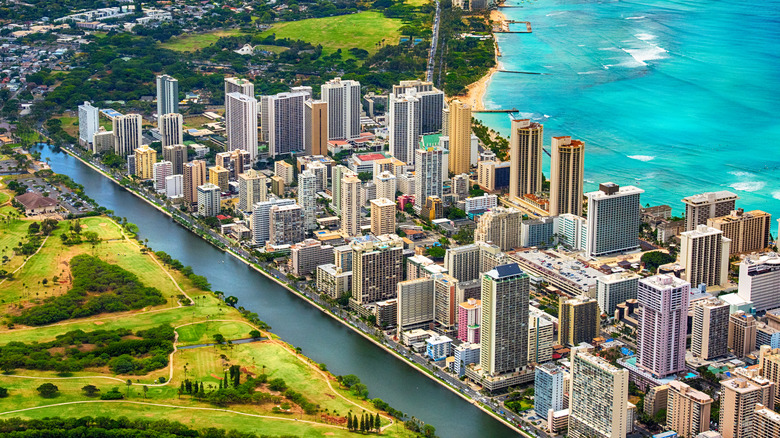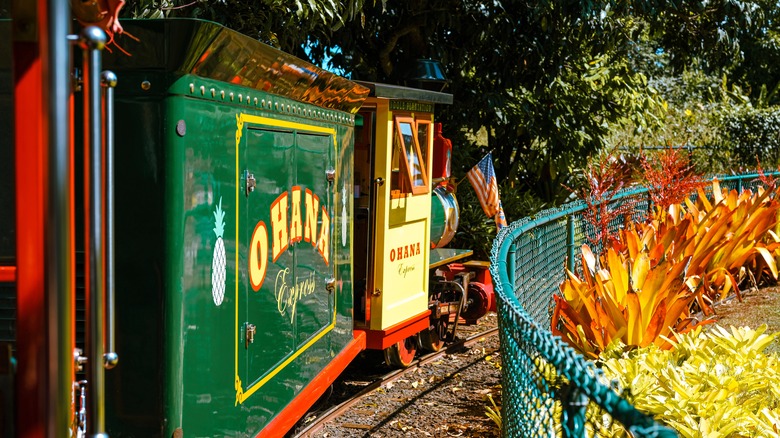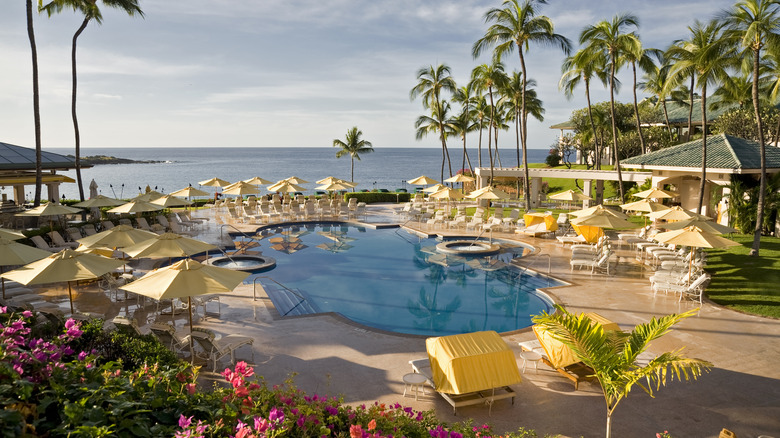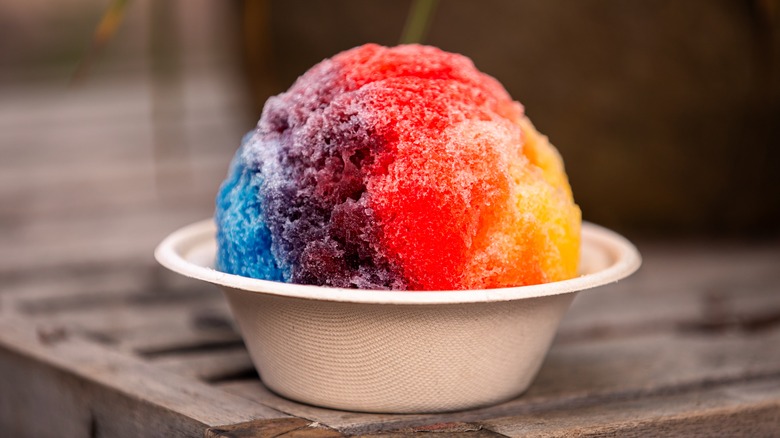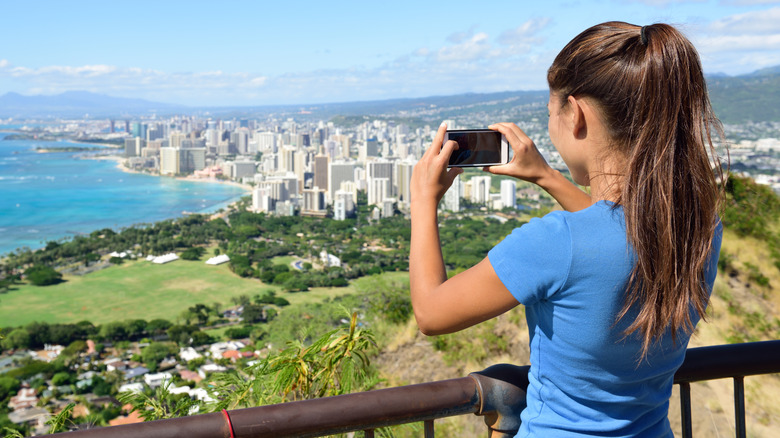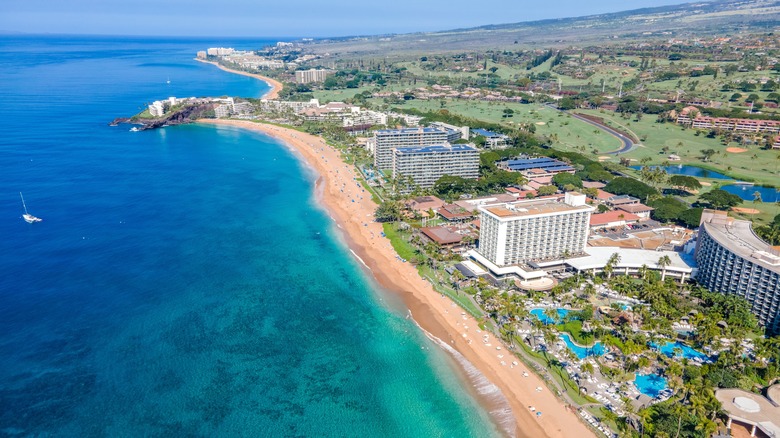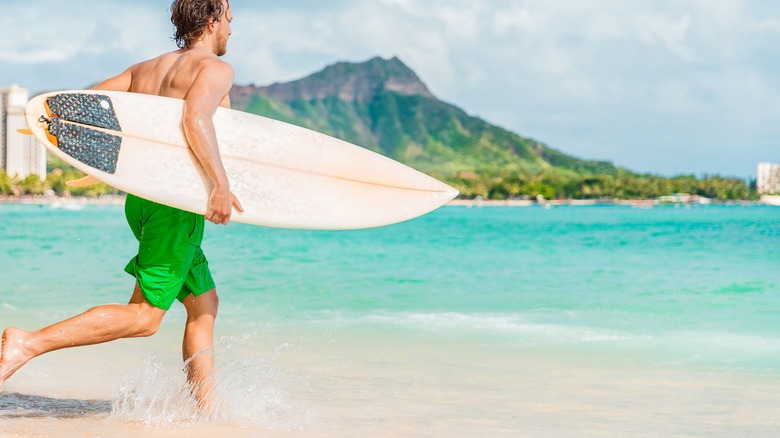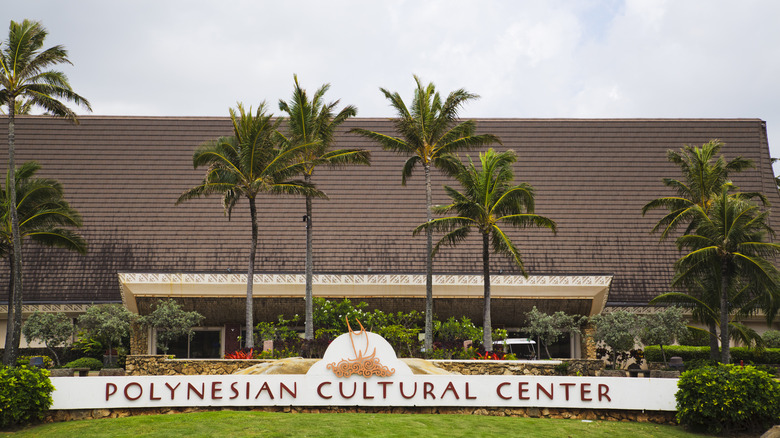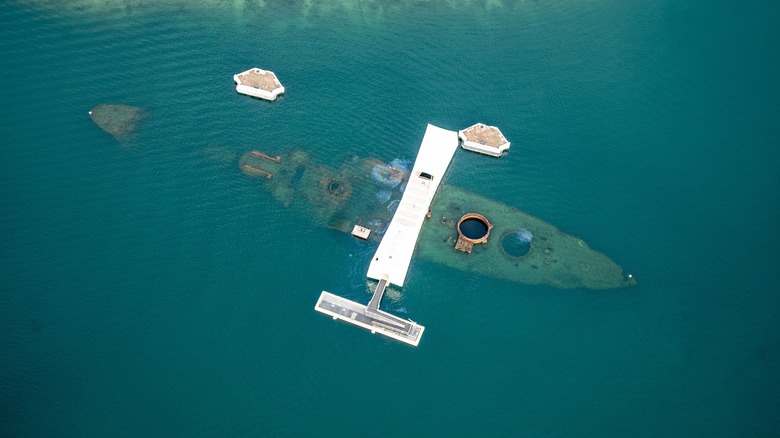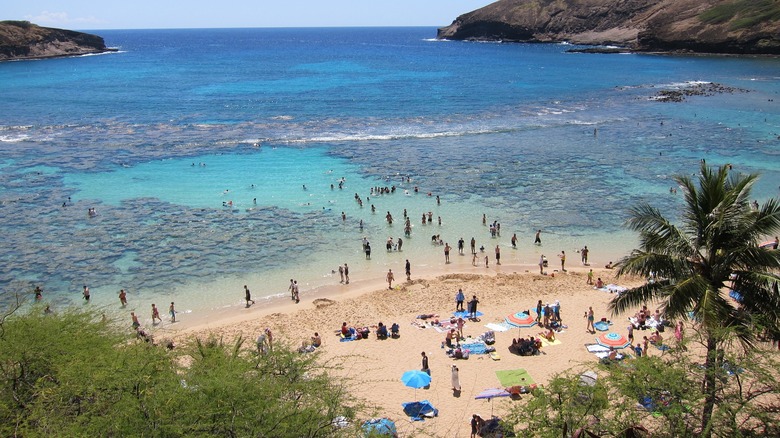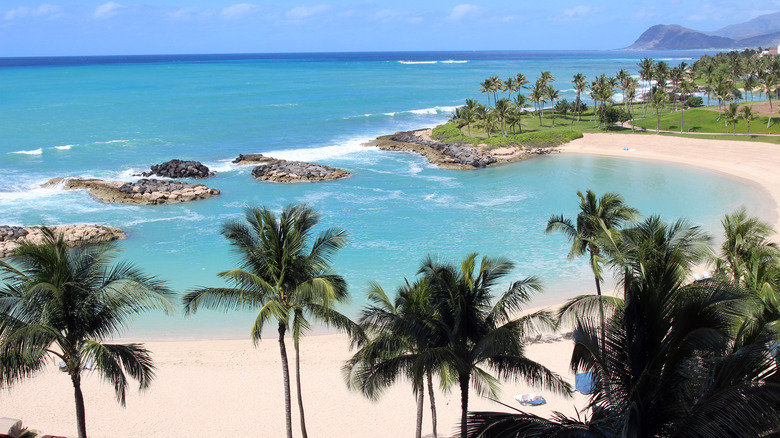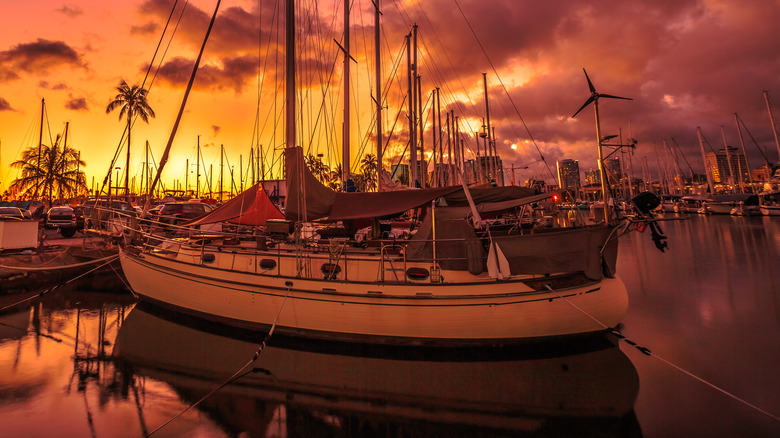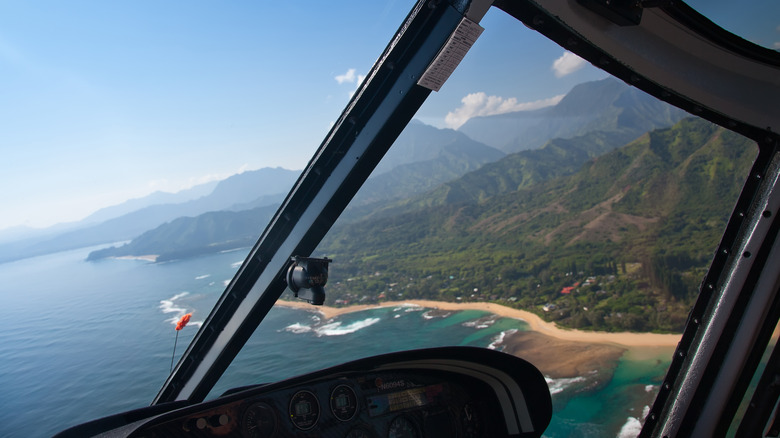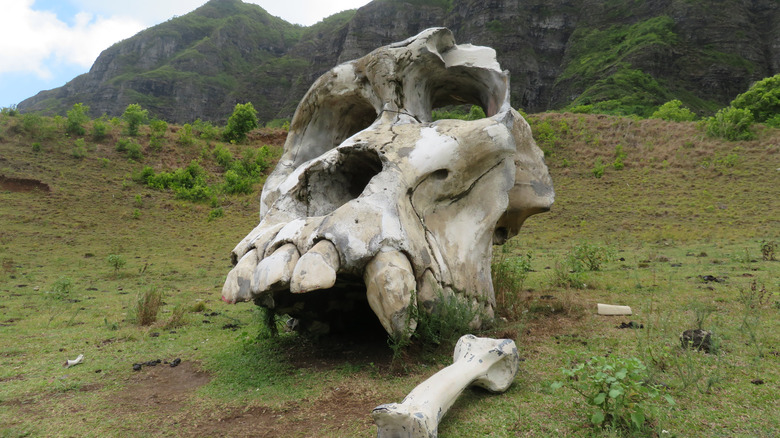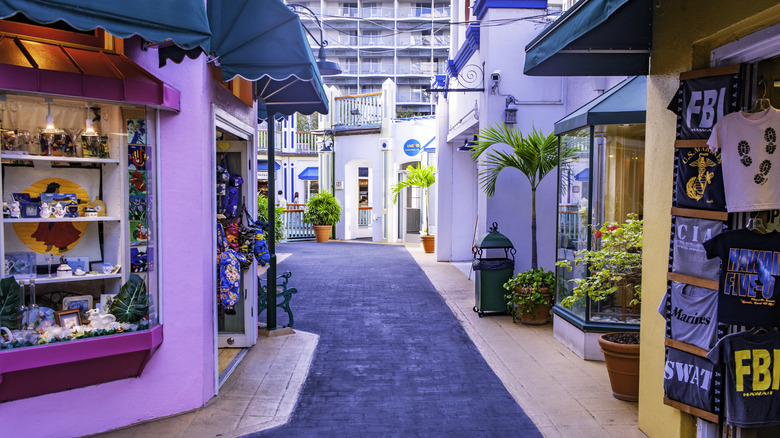Tourist Traps To Skip When You Visit Hawaii, According To Travelers
Looking at Hawaii on a map, a traveler might wonder how it's even part of the United States. This archipelago of islands in the Pacific is more than 2,000 miles from San Francisco. It is the youngest state in the nation, having become part of the U.S. in 1959. What is undeniable is that the islands of Hawaii are beautiful. This has not been lost on tourists, with millions coming to the area each year. Tourism makes up about a quarter of the Hawaiian economy and contributes billions to local coffers annually, according to the University of Hawai'i Sea Grant College Program.
Unfortunately, the constant stream of visitors has spawned experiences that do not accurately reflect the simple joys of Hawaii. It has also had a negative impact on many native Hawaiians. We've consulted blogs, travel sites, and online forums to find options visitors might consider removing from their vacation schedule. Additionally, we have suggested alternatives that get more to the heart of Hawaiian culture and nature wherever possible while still bringing tourism dollars to the state.
Inauthentic lūʻaus
As a performative expression of Hawaiian culture, a lūʻau is hard to beat. The extravaganza threads together a meal, music, and dance and is a popular event on the islands and throughout Polynesia. The lūʻau is believed to have started in Hawaii two centuries ago, and its name derives from the taro leaves integral to the food served. Lūʻaus are regularly staged around Hawaiia, but these public versions are primarily geared toward tourists, as commenters on Tripadvisor noted.
For guests of the resorts in Hawaii, a property might offer a regular lūʻau program with a huge feast and fire dancers. However, this is often a commercial enterprise that lines the pockets of the property, which might be internationally owned. Venues that stage nightly lūʻaus in areas like Waikiki present slick, structured productions that many feel cheapen the ceremony. The more authentic lūʻaus, as suggested by a Hawaiian resident on Tripadvisor, tend to happen away from the eyes of tourists, held privately by families, schools, or churches.
Chain restaurants
Some travelers find it comforting to eat at a chain restaurant, like the type that pops up in shopping centers or strip malls all over the country with identical menus. And yet, opting for the kind of dining experience you can have anywhere is deflating in a state with great local fruits and vegetables, a varied, cosmopolitan society, and excellent independent restaurants. It's like riding a chairlift to the top of a peak instead of taking in all the wonders of the surroundings on a slower but ultimately more rewarding hike.
You should consider avoiding even the chain restaurants unique to Hawaii. Rather than stopping at Big City Diner, Bangkok Chef Express, or Zippy's, look for the many more interesting one-off places to eat. For fans of Asian and local food (poke, the noodle soup saimin, and the local doughnut malasada), there is plenty of choice at standalone eateries.
Timeshare presentations
People on vacation sometimes live in a haze of happiness, a state where everything is golden and sunny and the possibilities are infinite. This is exactly why you shouldn't attend a timeshare presentation when on vacation: Your defenses will be down. Timeshares are a well-oiled sales pitch, with representatives for a property telling you how you can recreate the joy of your holiday by simply signing a document and plopping down a chunk of money.
But timeshares aren't a good deal. You only own a tiny part of the property, the share isn't easy to sell or exchange, and it rarely increases in value. Timeshare presentations try to lure you with free food or snacks and no requirement to commit. But why sit in a conference room to make a decision you might regret, as a former longtime resident of Hawaii notes on Quora when you could be outside enjoying Hawaii?
Waikiki
This section of Honolulu, the capital of Hawaii, has one of the most famous beaches in the world. Still, it's a roiling mass of tourists lying on the sand, according to Hawaii-focused blog Naturally Aloha. Furthermore, shops like ABC Stores (as noted by a local on Quora) sell kitschy dregs, while high rises contrast with the pleasant low-rise experience elsewhere. It's not that Waikiki isn't popular, but it doesn't represent the natural beauty of Hawaii. It's a small part of Honolulu, with the Ala Wai Canal separating it from the rest of the city, that has become a tourist magnet.
As a resident on Quora discussed, prices tend to be higher in Waikiki than elsewhere in the state. That's the case in restaurants, bars, grocery stores, and fast-food chains. The compensation tech company Payscale puts Honolulu's cost of living at more than 80% above the average for the U.S. If you can't bear the thought of staying outside Waikiki, then at least explore other parts of the city.
Plantation or factory tours
American farmers were early agitators in the politics of Hawaii, with some overthrowing the local queen in 1893. U.S. farming has long been interested in the islands, and many modern visitors take tours of popular agricultural domains. But these tours pander to overseas tourists and are driven by the chance to make some cash and sell products in a gift store.
The Dole Plantation mines the pineapple schtick with rides on a train called the Pineapple Express and a huge maze with central landscaping shaped like a pineapple. An Oahu resident called it an "oversized souvenir stand" on Quora. Similarly, the Mauna Loa factory tour includes a stop at the visitor's center, where bottles of macadamia nuts are piled up on tables for purchase.
Thankfully, visitors have other options while in Hawaii. Greenwell Farms runs free tours of its coffee plants on the Big Island. Meanwhile, the small-scale Waimanalo Country Farms is open seasonally and family-run.
Your plush resort
By definition, a resort is a place that solicits tourists. But that doesn't necessarily make it a trap. Some resorts embody the idea of paradise. It's easy never to leave these places, to spend the vacation having some R & R within the property, caught up in a web of drinks with umbrellas, luxe pools with fancy mosaics, and dinners watching the sunset.
The trouble is that staying in the resort for your entire trip does a disservice to the islands and their rich array of attributes. Hawaii is much more than a five-star resort; visitors should get out there and explore. From quiet, rugged beaches and amazing hikes in the interior to winding country roads, Hawaii is an experience far greater than the sum of its parts — and certainly more than any one hotel.
With all that said, visitors should aim to minimize their impact on local communities when venturing outside their hotels. "It's important for travelers to understand they are visiting someone's home," Ha'aheo Zablan, general manager of Kaimana Beach Hotel and Native Hawaiian, told USA Today. "We have amazing visitor-centric opportunities to take in all Hawaii has to offer without venturing into local neighborhoods or exploring too far from resort zones."
Matsumoto Shave Ice
Shave ice is a Hawaiian dependable, especially on a hot, humid day. It is a cooling delight that can quickly dispel the summer bake. Disarmingly simple in its execution, this sweet treat consists of finely shaved ice doused in bright flavored syrups. While a variation might be available in your hometown in the summer or during the warmer months, it's a beloved item year-round in Hawaii. Perhaps the most famous shave ice store on the islands is Matsumoto Shave Ice, on the island of Oahu.
However, as a local resident commented on Quora, the shop is a victim of its own success. Long lines are frequent, and the store's own line of souvenir apparel attests to its popularity. On top of that, the Hawaii-based Borders & Bucket Lists decried its flavors, complaining that the syrups are too sugary. Try another shave ice (never shaved ice) vendor, such as Ululani's.
Hiking Diamond Head
Technically known as Diamond Head State Monument, the peak is a must-do hike for many visitors to Hawaii. This is as much for the panoramic views en route as for the easy access from Waikiki. However, the walk up to the top of the volcanic crater is awash in tourists, and there is a charge for entry for non-Hawaii residents. All in all, this experience is a little underwhelming in a state with many less-congested hikes.
Sure, it's a challenging walk, and you will undoubtedly feel the workout, but some sections have concrete walkways that take the fun out of the natural terrain. When the trail is crowded, any sense of escape quickly disappears. Try the Lanikai Pillbox Hike (also called the Kaiwa Ridge Trail) or the Makapu'u Point Lighthouse Trail for a more rewarding, less trafficked Oahu option. Both are free and supply stunning coastal views.
Ka'anapali Beach
Oahu has Waikiki, and Maui has Ka'anapali Beach. While not entirely equivalent, both are the main tourist hubs of their respective island. Ka'anapali Beach is less developed than Waikiki, but it feels a little contrived to some. It is a resort village that was planned rather than grown organically. One commenter on Reddit called it a "rich people [playground]." It sits just north of Lahaina, the Maui town ravaged by wildfires in 2023.
Ka'anapali Beach has several internationally branded luxury resorts, condo villages, and chain restaurants. It even has a Whalers Village, a shopping mall that speaks to the prevalence of commerce there. Maui, like Oahu, has more authentic destinations dotted around the island. Try the low-key town of Makawao for its cool boutiques, art galleries, and paniolo (or cowboy) culture. Alternatively, Makena Cove's beach is tiny but feels so special and private, as detailed by the seasoned travelers at Maui Trip Guide.
Group surfing lessons
Hawaii played a central role in popularizing surfing — there is a statue of Duke Kahanamoku, a local hero who was a key driver of the sport, on Waikiki Beach. But that doesn't mean you must take a surfing lesson while there; it's not required. You might never surf again anywhere else in the world, and you certainly won't perfect how to jump up on a board and ride a cresting wave after one lesson.
Surf lessons are advertised all over the islands and often are run as group events, with one instructor dedicated to a few students. You're not going to learn a lot in that kind of setup; if you really want to take a lesson in Hawaii, opt for private instruction. It will be pricey (about $100 an hour from a school in Oahu, for example) but will represent better value in the long run.
Polynesian Cultural Center
The name of this attraction on the North Shore of Oahu suggests that visitors will experience a deep dive into the rich culture of the islands of Polynesia. Sadly, travelers have described it as a tacky, commercial theme park run by the Church of Jesus Christ of Latter-Day Saints instead. It opened in 1963 as a means by which students of the Church College of Hawaii (since renamed Brigham Young University-Hawaii) could fund their studies.
Created to showcase the traditions of Polynesia, the Cultural Center has evolved into a series of performances and schlocky entertainment pitched at tourists. One Tripadvisor contributor boldly declared it a "tourist trap." It features areas that represent the islands of Polynesia, games, demonstrations, cultural presentations, and more, but for many, it feels like a Disneyfied version of the real thing. As a commenter on Reddit put it, the "presentations felt very sanitized and like they bordered on making fun of the cultures."
Arizona Memorial
Pearl Harbor National Monument is worth seeking out. While it's filled with tourists, it's definitely not a trap. There are several different sections within Pearl Harbor, but some seem to get more attention than others. For example, many travelers insist on trying to see the Arizona Memorial and site, an homage to the sunken warship in the waters off Oahu. It's free to visit, but you must reserve tickets in advance — they can sell out fast. The whole experience is highly regimented as a result, with timings and transfers to the monument strictly enforced.
Many other sites worth seeking out don't get as much attention. One such option is the Pacific Fleet Submarine Museum, which provides a fascinating look at life under the water. It has a 4.3 rating on Yelp. Visitors can walk around the "USS Bowfin," which downed ships in the Pacific while in service between 1943 and 1945.
Hanauma Bay Preserve
While it's hard to fault the excellent snorkeling at Hanauma Bay Preserve — it's actually one of the best places to snorkel in the islands — it is another Oahu dependable that has grown too successful for its own good. Entry requires purchasing a timed ticket, which costs $25 for non-Hawaii residents. The preserve closes two days a week, so if you want to visit on a Monday or Tuesday, you can't.
Frequently, tour buses mob the location, making snorkeling stressful. If you can look past all that, try this place out, but there are quieter, cheaper places to snorkel that will be just as enjoyable. On Oahu's North Shore, Sharks Cove is a rocky beach with many fish and cool tide pools. On Maui, the rocky Honolua Bay requires swimmers to kick out a distance to the reef, but one Tripadvisor reviewer called it "a fantastic snorkel spot."
Ko Olina
On Oahu, this area of scooped-out beachfront and large resorts feels a little too perfect. On the island's west coast, known as the leeward coast, Ko Olina is a swathe of land and sea. It spreads across 642 acres, has fine vistas of the Pacific, and looks at verdant mountains behind and up and down the coast. Along the shore sits a series of lagoons, four semi-circles that each look like an apple slice and are so uniform that they don't feel natural.
Behind the lagoons are a number of high-end resorts, including one operated by Disney and a full golf course. It might sound like paradise to some readers, but in essence, it is a self-contained luxe area. This part of Oahu is another example of calculated commercialism and feels distanced from the true spirit of Hawaii. One Redditor described it as a "nice, peaceful, privileged area to live" with "lots of tourists."
Sunset cruises
There is no shortage of sunset cruises on the islands, from those that head out past Waikiki, to others that take in Ka'anapali Beach on Maui. Some ply the waters around the Big Island, which has many beaches that everyone should visit. But a sunset cruise, which might include a cocktail toast as the daylight fades, or even a dinner, is just so touristy. A comment on TripAdvisor states that they are "More of a luau on water. VERY touristy and they really, (really) pack you in tight. Food is mediocre as is the entertainment."
A better option where you won't be forced to interact in a compact space with people that you can't avoid, is to find a good restaurant that comes with sunset views. Or you could even take the whole experience down a notch. Simply take a stroll on the beach, or sit with a libation on the sand and enjoy the waning sun.
Helicopter rides
Taking a helicopter trip above the islands of Hawaii certainly seems like something that would appear on a travel bucket list. You'll get to see the sweep of Hawaii's glorious topography, but from hundreds of feet above the ground, you will feel detached from it all. Plus, these rides aren't cheap, costing hundreds of dollars for some fleeting time in the air. What's more, according to SF Gate, Hawaii seems to suffer from a disproportionate number of helicopter accidents. There's also the very real possibility of turbulence and air sickness derailing your enjoyment.
For a more up-close, personal view of the beauty of Hawaii's land, go on a hike. Or take a spectacular Hawaiian road trip — like the stunning Road to Hana, filled with twists and turns. Alternatively, rumble close to the coast aboard a boat. You won't be rushed and will feel more connected to the destination.
Kualoa Ranch
Movie fans might recognize the terrain around this former cattle ranch — parts of it were used for filming various "Jurassic Park" movies. But the place now aims to trap tourists, as a local highlighted on Quora. Kualoa Ranch is a spot where visitors can book an all-terrain vehicle Raptor Tour to see a number of filming location sites (Hawaii is a popular tropical filming spot). Or brave a zip-line above the canopy and a jungle tour from the back section of a jeep.
The ranch also hosts weddings and corporate get-togethers. It's not all bad, with programs that educate local students and groups, but for the average tourist that comes here on a shuttle bus, the wilderness is just a commodity. For a more authentic experience, stop at the nearby Ahupua'a 'O Kahana State Park, which has easy hikes, amazing views of Kahana Bay, and important cultural sites.
Methodology
There's much to see and do in Hawaii, but that doesn't mean it's all worthwhile. We've researched the riches of Hawaii, carefully consulting blogs like Beat of Hawaii written by people living on the islands. We looked at information from travel operators like Maui Kayak Adventures, which are based on the islands, as well as travel sites and online forums such as Reddit and Quora that detail discussions from people who live on or have visited the archipelago. We also spent time scouring the pages of Tripadvisor for travelers' testimony. Weaving all that together, we painstakingly listed things that these sources feel are best avoided: crowded, inauthentic, or overpriced options for which visitors can find better alternatives.
